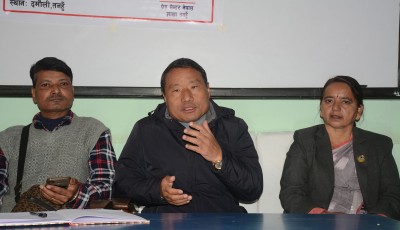Climate Finance at COP29: Who’s Paying What?

The COP29 climate summit in Azerbaijan has sparked intense debate over the financial obligations of wealthy nations toward the world’s poorer countries. With banners declaring "You owe us!" Protesters are demanding that developed countries, as the biggest contributors to climate change, provide more support to vulnerable nations.
Negotiators at COP29 are attempting to finalize a deal to secure $1 trillion annually by 2030 to support developing countries in their climate efforts. But the road to agreement is fraught with disagreements over who should pay, and how much, with a November 22 deadline looming.
How Much is Needed?
An UN-backed panel of economists recently published a report estimating that developing countries (excluding China) will need $2.4 trillion per year by 2030 to tackle climate change. The breakdown includes:
$1.6 trillion for transitioning away from fossil fuels,
Remaining funds for climate adaptation, disaster recovery, and nature conservation.
The report suggests that developing nations will need to shoulder $1.4 trillion of this amount, with the remaining $1 trillion covered by international grants, low-interest loans, and private investments.
What Should Governments Contribute?
At COP29, activists and leaders are pressing wealthy nations like the US and EU for larger contributions. Economist Amar Bhattacharya, who helped author the climate finance report, suggested that government contributions should reach $300 to $400 billion annually, at least triple current pledges.
However, donor nations face their own economic pressures, and the risk of losing momentum with the potential withdrawal of US climate support under Donald Trump.
What Has Been Raised So Far?
According to OECD data, wealthy nations raised $116 billion in 2022 for climate finance. Yet, questions remain: is this funding genuinely effective, or is it misallocated to projects like hotel sustainability that don’t directly aid vulnerable nations? Concerns also extend to loans, which add to the national debts of low-income countries.
Organizations are calling for increased transparency in climate finance. A study by the British think tank ODI evaluated each nation's climate contributions relative to their carbon footprint, population, and income, placing Norway and France at the forefront in 2022. The US, historically the largest carbon emitter, ranked second to last out of 23 nations.
With COP29’s November 22 deadline approaching, the question remains whether wealthy nations will step up to meet the financial needs of developing countries facing climate impacts. The clock is ticking on climate finance, and the stakes couldn’t be higher.



















तपाईको प्रतिक्रिया दिनुहोस